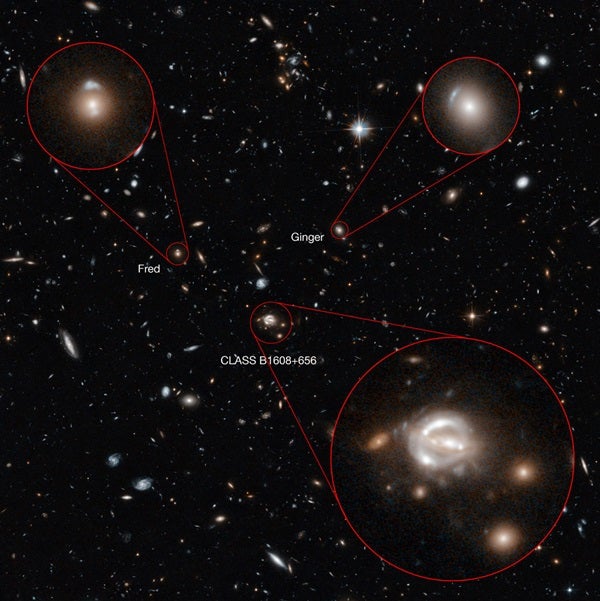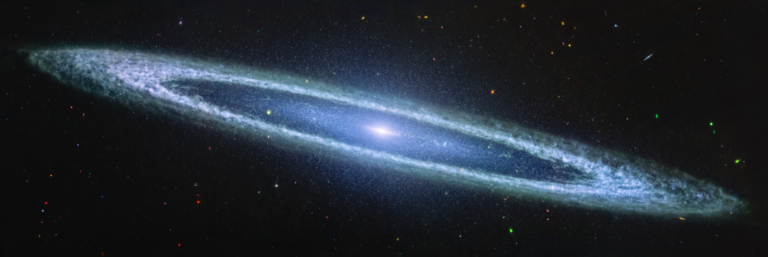These contain enough mass to visibly distort the light from objects behind them. Fred, also known more prosaically as [FMK2006] ACS J160919+6532, lies near the lens galaxies in CLASS B1608+656, while Ginger ([FMK2006] ACS J160910+6532) is markedly closer to us. Despite their different distances from us, both can be seen near to CLASS B1608+656 in the central region of this Hubble image, and are labeled.
This new Hubble image showcases a remarkable variety of objects at different distances from us, extending back over halfway to the edge of the observable universe. The galaxies in this image mostly lie within about 5 billion light-years of us, but the field also contains objects that are both closer and more distant.
Studies of this region of the sky have shown that many of the objects that appear to lie close together may actually be billions of light-years apart. This is because several groups of galaxies lie along our line of sight, creating something of an optical illusion. Hubble’s cross-section of the universe is completed by distorted images of galaxies in the very distant background.
These objects are sometimes distorted due to a process called gravitational lensing, an extremely valuable technique in astronomy for studying very distant objects. This lensing is caused by the bending of space-time by massive galaxies lying close to our line of sight to distant objects.
One of the lens systems visible here is called CLASS B1608+656, which appears as a small loop in the center of the image. It features two foreground galaxies distorting and amplifying the light of a distant quasar. The light from this bright disk of matter, which is currently falling into a black hole, has taken 9 billion years to reach us — two-thirds of the age of the universe.
As well as CLASS B1608+656, astronomers have identified two other gravitational lenses within this image. Two galaxies, dubbed Fred and Ginger by the researchers who studied them, contain enough mass to visibly distort the light from objects behind them. Fred, also known more prosaically as [FMK2006] ACS J160919+6532, lies near the lens galaxies in CLASS B1608+656, while Ginger ([FMK2006] ACS J160910+6532) is markedly closer to us. Despite their different distances from us, both can be seen near to CLASS B1608+656 in the central region of this Hubble image.
To capture distant and dim objects like these, Hubble required a long exposure. The image is made up of visible and infrared observations with a total exposure time of 14 hours.










